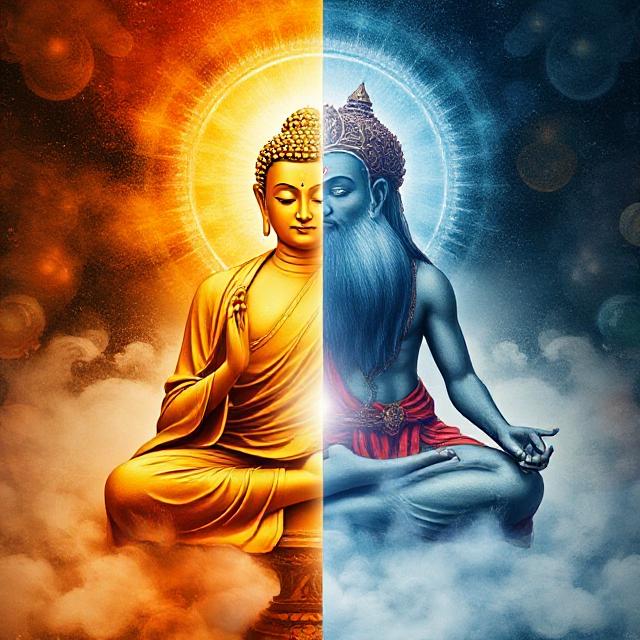Table of Contents
The Deep Divide in Understanding Morality
From daily decisions to global conflicts, questions of right and wrong shape human life. But is morality a universal truth waiting to be discovered, or a construct shaped by culture and perspective? The debate between moral relativism vs moral realism asks one of philosophy’s most fundamental questions: Is morality objective, or relative?
In short:
- Moral relativism holds that moral truths depend on cultural, historical, or individual context.
- Moral realism insists that moral facts exist independently of human minds, objectively true across all times and places.
Understanding this debate is crucial. It influences how we judge others, create laws, and form communities. In a world of growing multiculturalism and moral disagreement, grappling with these ideas helps us clarify when to tolerate difference—and when to stand firm.
I. What Is Moral Relativism? A Closer Look
Moral relativism posits that morality is not absolute but varies depending on cultural or individual contexts. It rejects the idea of fixed, universal moral truths. Instead, what is “right” or “wrong” depends on social conventions, traditions, or personal viewpoints.
Historical Roots of Moral Relativism
Though often associated with 20th-century anthropologists and philosophers, moral relativism has deeper roots. The ancient Greek Sophists, like Protagoras, famously said, “Man is the measure of all things,” implying truth and morality depend on human perception.
In modern times, thinkers like Franz Boas in anthropology emphasized cultural context, documenting how moral norms differ drastically worldwide.
Varieties of Moral Relativism
- Cultural Relativism: The most common form, which states that moral codes and values are relative to cultures. For example, practices considered moral in one society (like arranged marriages) may be immoral in another.
- Subjective Relativism: Here, morality depends on individual feelings or beliefs. Each person defines their own moral code.
- Descriptive vs Normative Relativism:
- Descriptive notes the factual observation that moral beliefs vary.
- Normative holds that moral relativism should be embraced — that is, we ought to accept moral diversity as valid.
Arguments Supporting Moral Relativism
- Explains Moral Diversity: It accounts for why cultures have different beliefs about practices like diet, marriage, or punishment.
- Promotes Tolerance: Encourages respect for different ways of life, reducing ethnocentric judgment.
- Respects Context: Recognizes that morality may be shaped by historical, environmental, and social factors.
Example: In some cultures, eating certain animals is taboo, while others see it as normal or even sacred. Moral relativism helps us understand these differences without quick condemnation.
Critiques and Challenges of Moral Relativism
- Moral Paradox: If all morality is relative, can we ever say any action is truly wrong? This may allow harmful practices (e.g., discrimination, oppression) to go unchallenged.
- Inconsistent Tolerance: If tolerance is a moral value, relativism struggles to argue for it universally without contradiction.
- Conflict Resolution: When cultures clash, relativism offers no firm ground to mediate disputes.
II. What Is Moral Realism? The Case for Objective Morality
Moral realism asserts that moral facts exist independently of human opinion or belief. Right and wrong are discovered, not invented.
Historical Foundations
Moral realism’s roots trace back to Plato, who argued that moral truths are forms or ideals existing beyond physical reality. In the Enlightenment, Immanuel Kant proposed universal moral laws based on reason, such as the Categorical Imperative, demanding actions be universally applicable.
Modern moral realists argue that just as mathematical truths are true independent of belief, so are moral truths.
Core Ideas in Moral Realism
- Moral Facts: Statements like “Murder is wrong” are objectively true.
- Universalism: Morality applies to all humans regardless of culture or individual opinion.
- Moral Knowledge: Humans can discover moral truths through reason, intuition, or empirical investigation.
Supporting Arguments for Moral Realism
- Moral Disagreement: The very fact that we argue about morality implies we are seeking objective truth.
- Moral Progress: Societies evolve in moral understanding, suggesting improvement towards a truth (e.g., abolition of slavery).
- Human Rights: The idea of inalienable rights depends on objective moral standards.
Example: Across many cultures and times, prohibitions against murder and theft appear, hinting at some universal moral foundation.
Criticisms and Issues
- Ontology Problem: How do moral facts exist? Are they physical, metaphysical, or something else?
- Epistemological Challenge: How can we reliably know these moral truths?
- Disagreement: Persistent deep disagreements challenge the claim of universal moral truth.
III. Comparing Moral Relativism and Moral Realism in Detail
| Feature | Moral Relativism | Moral Realism |
|---|---|---|
| Nature of Moral Truth | Relative to culture, individual, or situation | Objective and independent of opinions |
| Basis for Morality | Social norms, personal feelings | Universal moral facts, reason, intuition |
| Flexibility | High — adapts with context and culture | Low — fixed moral truths exist |
| Approach to Moral Disputes | Differences accepted as valid | Disputes aim to find the objective truth |
| Critique of Harmful Acts | Hard to universally condemn harmful cultural acts | Can condemn acts universally (e.g., genocide) |
| Role of Tolerance | Promotes tolerance | Tolerance justified by objective moral principles |
IV. Real-World Applications and Moral Dilemmas
A. Human Rights
Moral realism often grounds international human rights, arguing some rights are universal and inviolable. Moral relativism, however, questions imposing such rights across different cultures.
B. Justice and Law
Laws reflect moral beliefs. Relativism explains variations in legal systems globally, while realism pushes for universal justice standards (e.g., fair trial, prohibition of torture).
C. Cultural Conflicts
Relativism encourages cultural sensitivity, but realism can provide a foundation to challenge practices that violate fundamental human dignity.
V. Bridging the Divide: Hybrid and Alternative Views
Recognizing flaws on both sides, many philosophers adopt nuanced positions:
- Moral Universalism: Some morals (e.g., fairness, harm avoidance) are universal, while others depend on culture.
- Contextual Objectivism: Objective moral truths exist but require interpretation according to circumstances.
- Constructivism: Morality is not discovered but constructed via rational agreement among individuals or societies.
VI. Philosophical Debates and Influential Thinkers
- Relativists: Ruth Benedict emphasized cultural context; Gilbert Harman questioned moral objectivity.
- Realists: Plato posited eternal forms; G.E. Moore emphasized objective moral properties; Derek Parfit focused on reasons for moral truths.
These debates extend into metaethics — the study of the nature of moral language, truth, and knowledge.
VII. Reflections and Self-Examination: Journal Prompts
- Do you think moral truths exist independent of human thought? Why or why not?
- How does your cultural background influence your sense of right and wrong?
- Can moral relativism justify tolerance without contradiction?
- When have you encountered a moral conflict with someone from a different culture?
- Can you think of any moral rules that should be universal?
VIII. Recommended Reading for Deeper Understanding
- The Elements of Moral Philosophy by James Rachels — Clear introduction with balanced perspectives.
- Ethics: Inventing Right and Wrong by J.L. Mackie — Argues against moral realism.
- Moral Realism and the Foundations of Ethics by David O. Brink — Contemporary defense of realism.
- Moral Relativism: A Short Introduction by Paul J. Komesaroff — Concise explanation of relativism.
IX. Conclusion: Charting Your Moral Compass
The debate between moral relativism vs moral realism challenges us to examine the foundations of our ethics. Are morals discovered truths, or reflections of human culture and subjectivity?
In a globalized world with clashing values, understanding both perspectives helps us balance respect for diversity with commitment to justice. Neither extreme fully suffices, but together, they form a richer ethical map to navigate the complexities of right and wrong.
The ongoing philosophical journey invites us all to think critically, challenge assumptions, and refine our moral vision.




